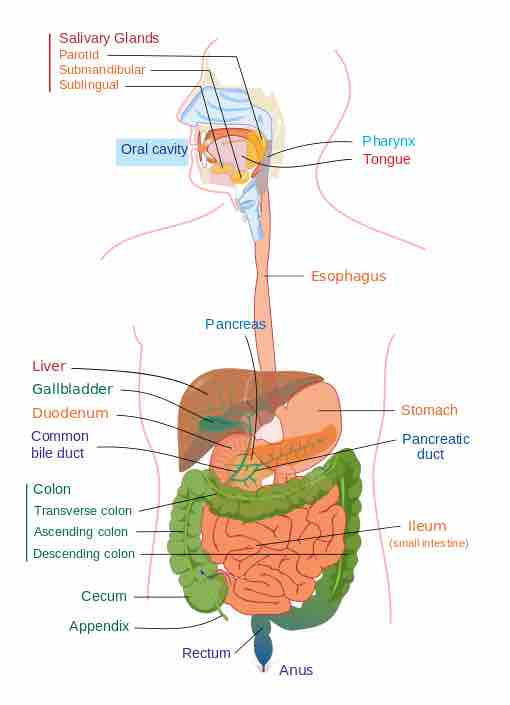The esophagus is an organ in vertebrates which consists of a muscular tube through which food passes from the pharynx to the stomach. It is a major component of the upper digestive system. The word esophagus is derived from the Latin œsophagus, which derives from the Greek word oisophagos, meaning "entrance for eating". It is lined with mucus to aid in the passage of food.

Esophagus
The location of the esophagus within the greater digestive system in humans.
Length and Location
In humans the esophagus is continuous with the laryngeal part of the pharynx within the neck, and it passes through the thorax diaphragm and into abdomen to reach the cardiac orifice of the stomach. It is usually about 10–50 cm long depending on individual height. Due to the inferior pharyngeal constrictor muscle, the entry to the esophagus opens only when swallowing or vomiting.
Layers of Tissue
The esophageal tube in humans is comprised of two main layers of smooth muscle, though striated muscle comprises the tube near the pharynx. This combination of muscle tissue allows peristalsis to push food downward, and aids in regurgitation at the pharynx. The innermost layer of smooth muscle is arranged in a series of concentric rings, while the outermost layer is arranged longitudinally.
In much of the gastrointestinal tract, smooth muscles contract in sequence to produce a peristaltic wave which forces a ball of food (called a bolus) from the pharynx to the stomach.
The Gastroesophageal Junction
The junction between the esophagus and the stomach (the gastroesophageal junction or GE junction) is not actually considered a valve in the anatomical sense, although it is sometimes called the cardiac sphincter.